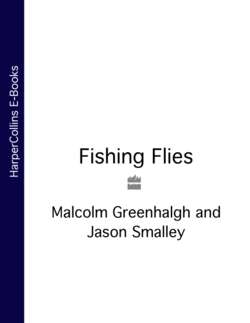Читать книгу Fishing Flies - Smalley - Страница 21
SOME EARLY FLIES FROM NORTHERN SPAIN
ОглавлениеThe Danish fly-dresser Preben Torp Jacobsen was invited by Spain’s president General Franco to dinner. After dinner Franco, who was a great fly-fisher and angling bibliophile, showed Preben his vast library. Among the collection was a hand-written manuscript, dated 1624, by Juan de Bergera, and called El Manuscrito de Astorga. Preben had photographs of the manuscript made and then, with a team from the Spanish Association for the Fly and Salmonids, produced a limited edition consisting of a facsimile of the original and translations into modern Spanish, French and English. Unfortunately a fire subsequently destroyed part of Franco’s library, including the original manuscript.
Astorga is a small town not far from Leon in the Cantabrian Mountains. The rivers there have some very good fishing for brown trout, and it was to catch them that the flies in El Manuscrito were designed. The flies include in their dressings some of the most interesting wild birds to be found in Spain (such as pin-tailed sandgrouse and little bustard) and some very special hackles from cocks bred only in this region. These ‘Coqs de Leon’ are still available and, though expensive, are amongst the best material to use for tying upwinged fly (ephemerid) dun and spinner tails. There are two main types of Coq de Leon. ‘Indios’ are plain hackles, varying from the near white palometa to the blackish negrisco. ‘Pardos’ have a blackish centre (list) and coloured edges which vary from the creamy transparent crudo to a very dark grey corzuno, sometimes with black speckles.
El Manuscrito contains 49 different dressings, four of which are given here. Three are confusingly called Negriscos (they imitate a dark midge called enaguados), the fourth is one called Bermejo Crudo. Note that we do not know how these flies were tied. Hackles were then solely feathers and may not have been wound round the hook as we today wind hackles. However the last fly has one feather used as ‘a wrapping’, which presumably means that it was wrapped (i.e. wound) as we would wind a hackle, in which case, it seems likely that the others were not wound, but simply tied in. This is also suggested by the last of the four flies, where one feather was tied ‘on top’ of another. Whatever. The following tyings are one person’s interpretation.
NEGRISCOS (FOR JANUARY AND FEBRUARY)
Thread: Grey.
Body: Dark silvery grey silk.
Rib: White silk.
Hackles: Two very dark blue dun.
NEGRISCOS (FOR FEBRUARY AND MARCH)
Thread: Black.
Body: Black (linen) thread.
Hackles: Two extremely dark (almost black) blue dun.
Head: Fawn and white thread.
NEGRISCOS (FOR SUNNY DAYS IN FEBRUARY AND MARCH)
Thread: Black.
Body: Black (linen) thread.
Rib: White thread.
Hackles: Two short barbed negrisco hackles.
Head: Black.
BERMEJO CRUDO (FOR THE SECOND HALF OF MARCH AND APRIL)
Thread: Purple-red.
Body: Tying thread.
Rib: Blue and white thread.
Hackles: ‘It has a light blue dun negrisco [hackle]. Then a very fine textured pardo [hackle] that is not golden yellow; on top of the latter a kingfisher’s [feather]. Then another negrisco [hackle] identical to the first one. As a wrapping [wound hackle?] two turns of a bright vermilion [hackle] from a muladar cock.’
NOTE: Preben gave a footnote to the effect that ‘muladar’ meant dung, and that it was believed that the dung from mule stables gave cocks a very particular shade.
